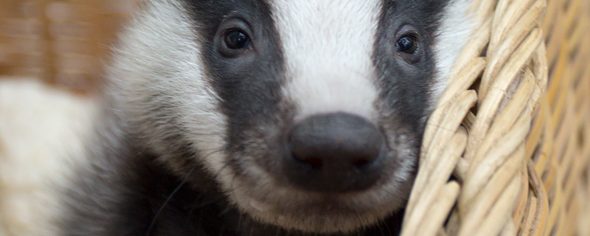Revised 27th April 2021
George Eustice’s Badger Cull consultation misrepresents reality. Tony Juniper should prevent Natural England processing further licences based on the flawed Ministerial claim.
On the 18th March, the Badger Crowd was pleased to see a solicitor’s letter being sent to the Government Legal Department and Natural England raising serious concerns over Defra’s “Next Steps” (March 2020) Policy consultation that ended on 24th March 2021. This relates to attempts to deliver the government’s strategy for achieving bovine tuberculosis (bTB) free status for England.
Fundamentally misleading and erroneous…
The main concern is a fundamentally misleading and erroneous statement by the Secretary of State on 27th January 2021 which underpins the consultation proposals. It states that badger culling “…has played a critical role in helping to start turn the tide on this terrible disease.” This is an extremely serious matter in many regards. Up to a further 150,000 badgers may be culled under these proposals over the next six years. This will be as many or more as have been killed to-date, involving huge use of public funds, police time and other government resources.
The legal letter asks that the consultation is postponed until mistakes have been corrected, to ensure a fair and lawful consultation, based on a proper understanding and articulation of the evidence.
In recent years both the Chief Scientific Advisor (CSA) and Natural England have expressed concerns over the scale of badger culling (see here) and the ability to link any changes in bTB levels in cattle to badger culling. Prior to his retirement CSA Prof. Ian Boyd described the problem as badger culling ‘often not working as predicted’ and needing an operational control approach based upon face value outcomes.
Natural England’s internal deliberations on the uncertainties of evidence when licensing culling were shown in Dr Tim Hill’s note to Natural England Board meeting of 6 November 2019, as released under Freedom of information, see here.
“7.1. As implementation of the culling policy has progressed a series of evidence needs and gaps have emerged. Culling is taking place over an expanding area of England and, as we advised in 2010 and 2011, it means the Government is increasingly less able to rely on the evidence base provided by the RBCT. Implementation of the policy has also identified operational challenges for which the existing evidence base is proving unsatisfactory. Finally, intensive culling was never proposed as the long-term solution to controlling TB in badgers and – particularly in light of the Godfray Review – we need to revisit the available evidence to inform future strategies.”
The 2021 statement and consultation
The statement that badger culling has played a critical role in helping to start turn the tide on bovine tuberculosis has been widely repeated in the media in recent months, including by the chief veterinary officer and by government officials. It underpins and hugely influences the current consultation.
Data on bTB herd breakdown for the High Risk Area (HRA) has become available online in recent months, both in the APHA bTB monitoring reports and bTB statistical data for Great Britain. That data has not been properly presented in the consultation. It contradicts the public statements surrounding the consultation and the terms of the consultation document itself. On proper scrutiny, the data is telling a different story. We are analysing the latest data at the moment, and will be publishing an analysis of the ‘real world’ results of the bTB policy soon.
Cattle measures beginning to have an influence, well before badger culling started
Results are suggesting that any changes in bTB incidence in the HRA have been brought about by cattle measures beginning to have an influence, well before any mass badger culling started. For the government to use the average figure for herd breakdowns for the four years prior to culling commencing is wholly misleading. All the signs are that the previous modelling has been inaccurate in reflecting what can now be shown to have actually happened.
For these reasons, there is grave concern not just that past theoretical modelling simply has not reflected reality and the face-value evidence of outcomes, but that the real time data on the period 2013-2019 has been repeatedly misrepresented to the public by the Secretary of State, both in public statements and in the current consultation process.
The demand now is for proper correction of the misleading information within the consultation in relation to the effectiveness of culling from the evidence held to date. The Secretary of State George Eustice must correct his public statement accordingly. Any further consultation must take the real situation into account and not articulate false information to influence stakeholders in a misleading way.
Tony Juniper at Natural England should instruct his staff to allow no further badger cull licence applications to be processed. A new position should be set out by the Secretary of State based upon the effectiveness of such licensing, as is required by the Protection of Badgers Act 1992 and other legislation and Natural England’s wider duties to protected species, habitats and designated nature conservation sites.
We ask that the costly, cruel, failed and pointless badger culls are brought to an end right now. Emphasis should be switched towards more comprehensive cattle measures that are known to be effective. These could make deep inroads in disease control in four years if carried out properly. This is in line with aspects of the Godfray review and the current government’s stated wish to tilt the policy away from badger culling. Hopefully for good.
We are the Badger Crowd and our fight is to seek justice for badgers, cows and for sustainable farming & wildlife management.
Discover more from The Badger Crowd - standing up for badgers
Subscribe to get the latest posts sent to your email.

